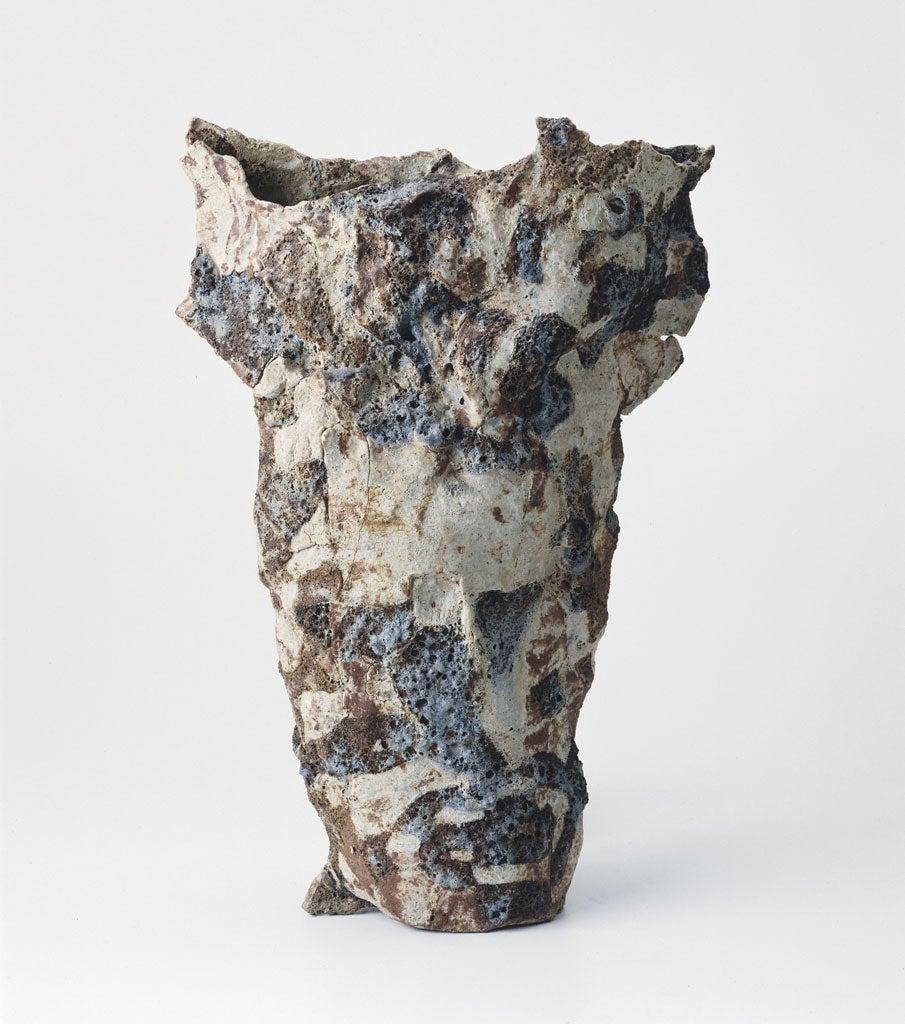Great Works: Dark Torso, 1986, By Ewen Henderson
Private collection

Ceramicists, those makers of useful objects called pots, are the unsung heroes of the world of contemporary art. The greatest of them seldom make much of a splash in the gallery or the auction house. Their pots, at best, sell for thousands rather than hundreds of thousands. The word itself – pot – has a monosyllabic, work-a-day modesty about it. The words painting and sculpture, by comparison, cut much more of a dash.
Many artists use clay as a material, of course (think of Alison Wilding, Richard Deacon and Pablo Picasso) – in fact, to describe yourself as a multi-media artist is becoming more and more customary – but to proclaim yourself to be a ceramicist tout court continues to be tantamount to an act of self-immolation. The blight lies in the fact the ceramicist is too readily pigeon-holed as a mere craftsman; that the ceramicist's vision, it seems, is somehow incapable of transcending the debasing curse of clay, that "lowly" material; that the fact an object can also be purposeful demeans it – unless, of course, it happens to be at least a couple of millennia in age, when the purposefulness can be forgotten. Step forward the Greek amphora.
This is a vessel, made by a great ceramicist of the 20th century, who spent much of his career raging against the unjust ghettoisation of his chosen material. The material is not clay alone. It is clay with additives – paper, grog (used to reduce the shrinkage of clay). It is a collage of materials which have been fired in the kiln repeatedly.
Vessels often ape the shape, the curvature of the human body. That is part of their appeal. When you fondle in your cupping hands the warmth of a mug full of piping hot tea, you are reminded of that fact. Picasso often played off shape against decorative surface, wittily, sexily. To a degree, Ewen Henderson's craggy, quasi-geological form is, as its title proclaims, suggestive of the human form too – the outward belling of a torso, crossed by a broadening into the shoulders as it rises. Henderson's pots got narrower and more delicate looking as he aged. And yet at the same time they seemed to possess a kind of ghostly monumentality.
So what we have here is a kind of magnificently fragile after-image of that which seems to be proclaiming its timeless durability. What is more, you could argue this is not exactly a utility vessel at all. It is a slightly dysfunctional utility object (many of Henderson's pots leaked) which appears to be aspiring towards the condition of sculpture. It seems to be a pot in the act of transforming itself into ancient landscape.
Its surface, which boils and ferments like a tankard of ale, is pitted, weathered, blistered – somewhat in the way the surfaces of Anselm Kiefer's paintings are. Its variegated colours, that patchwork of strange stainings, seem not to be of the surface at all. They have emerged from within.
About the artist: Ewen Henderson (1934-2000)
Ewen Henderson was a pupil of the ceramicists Hans Coper and Lucie Rie, but his vessels owe just as much to painting and sculpture as to traditions of pot-making. He taught ceramics at Camberwell College of Art. His work, which thinned and grew less convincingly vessel-like as he aged, increasingly seemed to be setting up dialogues between his chosen material, clay, and the work of such artists as Graham Sutherland and William Turnbull.
Join our commenting forum
Join thought-provoking conversations, follow other Independent readers and see their replies
Comments
Bookmark popover
Removed from bookmarks